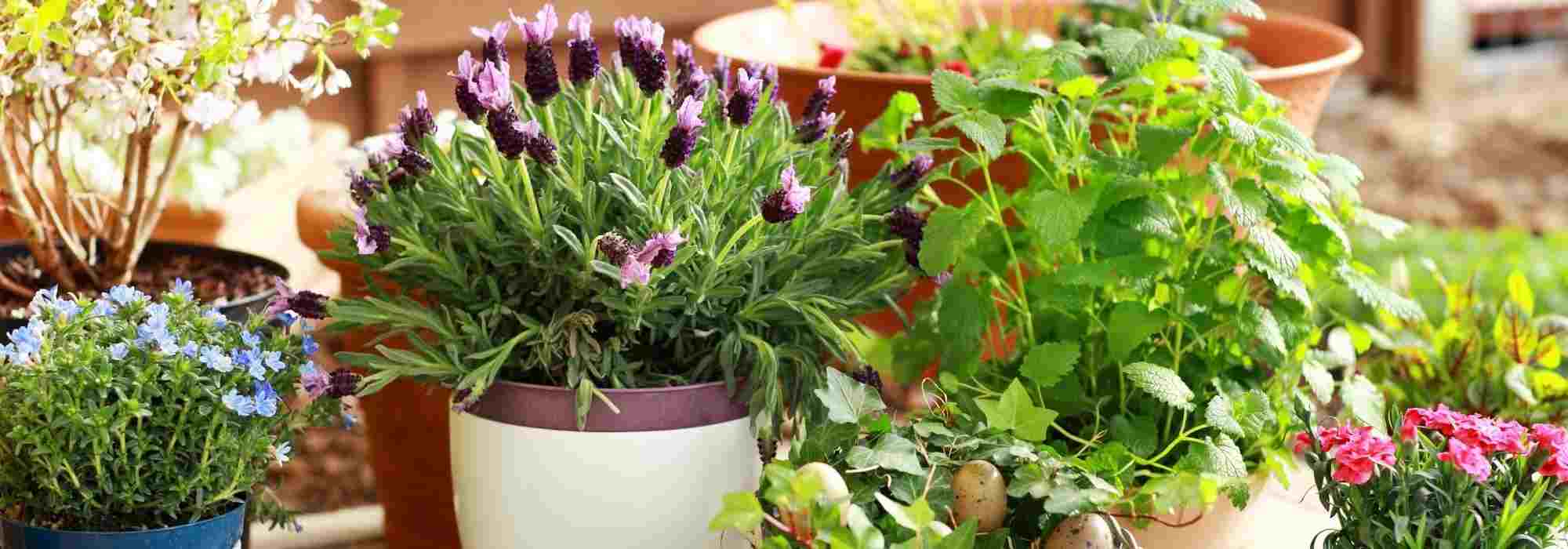
7 perennials to grow in pots on a West-facing balcony
Discover the appropriate varieties
Contents
A West-facing balcony is shaded in the morning and enjoys sunlight from the afternoon until evening. This situation requires plants that can withstand intense sun. During hot summer days, the substrate of perennial plants in pots dries out quickly, so watering must be regular. Plants that are low in water requirements are therefore more suitable. Additionally, west-facing balconies are exposed to wind, which is another factor to consider. On the other hand, thawing occurs more slowly than in the east and happens gradually. The temperature change is therefore less abrupt, which is ideal for plants sensitive to frost. Of course, the pots of the least hardy plants should be wintered during the winter period. The perennials we offer are small in size, easy to grow and maintain.
Discover our selection of the most beautiful perennial plants to brighten up your balcony!
Agapanthus 'Flower of Love'
Thanks to its small stature, 50 cm in all directions, Agapanthus ‘Flower of Love’ is perfect for pot planting! This deciduous perennial forms a tuft of glossy green ribbons topped with long, airy flower stems. In July and August, the blue tuberous ‘Flower of Love’ adorns itself with numerous round umbels of intense blue! It boasts one of the most pronounced blues among Agapanthuses. These flowers, measuring around ten centimetres in diameter, allow for the creation of stunning bouquets. Plant this Lily of the Nile in full sun in rich, cool, sandy soil to ensure good drainage. Choose a pot slightly larger than the root ball, as the Agapanthus prefers to be snug and blooms better that way. This variety is hardy down to -15°C, but in very cold regions, bring the pot indoors to protect it from frost during winter. Also known as the Flower of Love, the highly floriferous Agapanthus ‘Flower of Love’ is easy to care for: cut off faded flowers throughout the summer, and reduce watering in autumn, as this perennial is sensitive to excess winter moisture.
When placed alone in a beautiful pot, the Agapanthus ‘Flower of Love’ creates an exotic pot display on your balcony alongside other varieties of white and purple Agapanthuses, Cannas, Crocosmias ‘Paul’s Best Yellow’, and ‘Carmine Brillant’, Kniphofias, Daylilies, and Imperata cylindrica ‘Red Baron’.
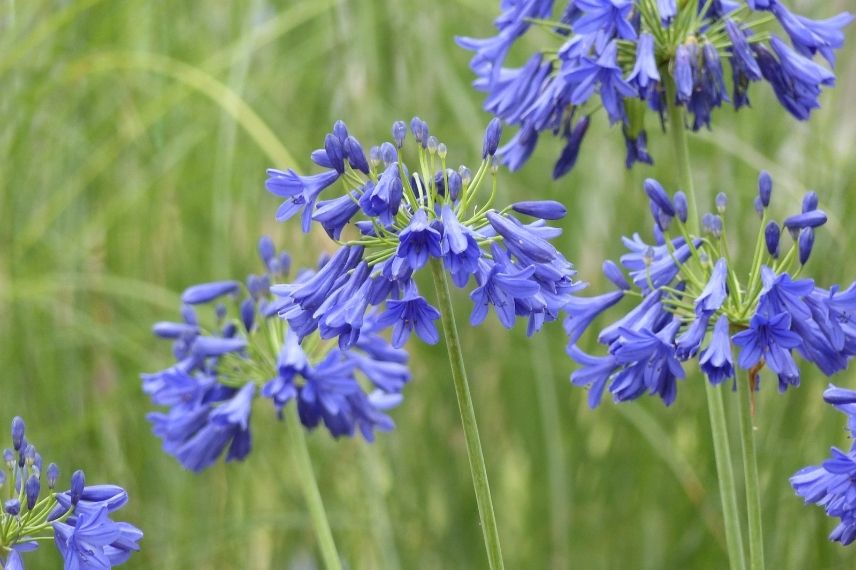
Agapanthus ‘Flower of Love’
Discover our entire range of Agapanthuses on our website.
Find out everything you need to know about Agapanthuses: how to plant, grow, and care for them.
Also, check out our articles: Agapanthuses: 7 sure values, White Agapanthus: 7 varieties to discover, and Evergreen Agapanthuses.
Read also
Growing lavender in a potCoreopsis ‘Full Moon Madness’
For a sparkling and bright balcony, choose Coreopsis ‘Full Moon Madness’! This dense clump, 60 cm high and 50 cm wide, lights up pots with its fresh, light yellow flowers! Indeed, this perennial offers a long and abundant flowering of “daisies” from June to October. Additionally, the dark green foliage of this Coreopsis, with its fine cut, is very decorative. With excellent hardiness and good disease resistance, place Coreopsis ‘Full Moon Madness’ in a sunny position. Its pot should contain light, fresh, and well-drained soil. Note that it tolerates drought very well once established. Very easy and vigorous, this Coreopsis is suitable for beginner gardeners. To encourage flowering, regularly remove faded flowers during the summer.
Pair Coreopsis ‘Full Moon Madness’ with Dianthus, Osteospermums, and Euphorbia griffithii ‘Fireglow’.
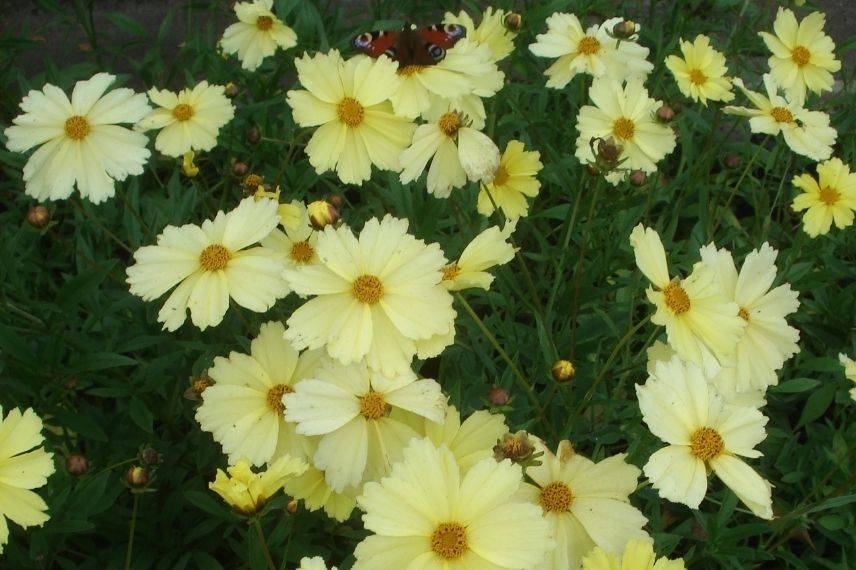
Coreopsis ‘Full Moon Madness’
Discover our range of Coreopsis.
Learn all about planting, growing, and caring for Coreopsis.
Discover other Container perennials
View all →Available in 0 sizes
Available in 1 sizes
Available in 1 sizes
Available in 1 sizes
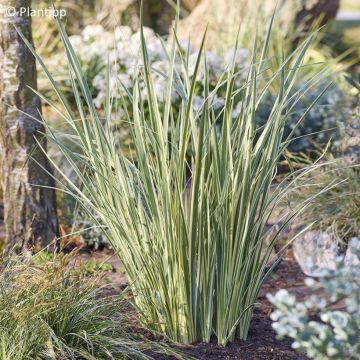
Available in 1 sizes
Available in 1 sizes
Available in 1 sizes
Available in 1 sizes
Available in 2 sizes
Available in 1 sizes
Iris germanica 'Frisk Me'
The flowering of Iris germanica ‘Frisk Me’ is unique! This garden iris, standing at a height of three apples, produces flowers in a pink-beige hue veined with violet! The trailing sepals each bear an orange beard at their base, transitioning to lavender blue. To make the most of this magnificent flowering in April and May, find it a warm, dry spot in the sun. Its weak point: moisture which causes the garden iris to rot its rhizomes and attracts slugs. It is therefore important to plant it in light, stony (thus well-drained) and rather calcareous soil. For maintenance, cut the flower stems back after flowering (leaving 10 cm) and the leaves when they are well dried to prevent fungal diseases.
This hardy dwarf perennial with deciduous foliage thrives in pots alongside hardy geraniums, the Verbena bonariensis ‘Lollipop’, Love-in-a-Mist, and bulb plants.
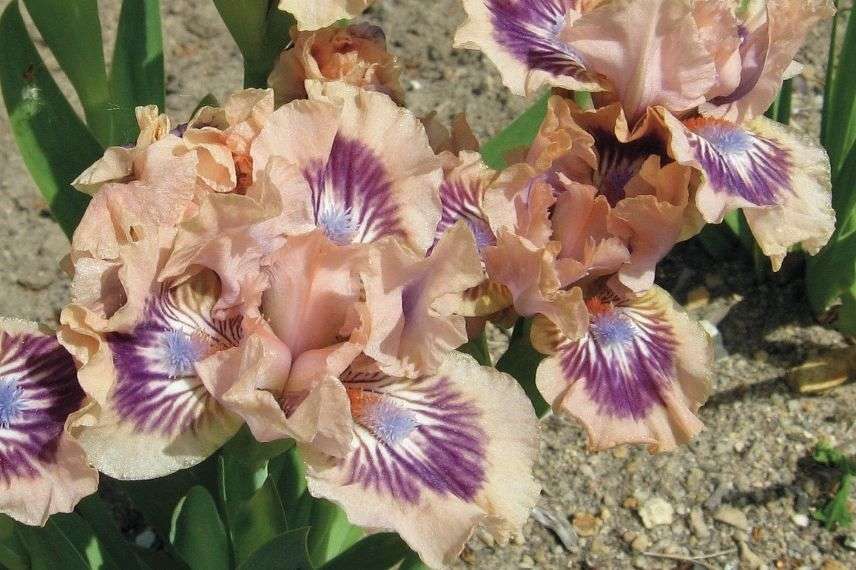 The dwarf garden iris Iris germanica ‘Frisk Me’
The dwarf garden iris Iris germanica ‘Frisk Me’
All our species and varieties of Iris in our online nursery.
Our tips for planting, growing, and maintaining irises.
Gaura lindheimeri ‘Freefolk Rosy’
Among the many hardy varieties of Gauras, here is one that stands out thanks to its variegated foliage! Indeed, Gaura lindheimeri ‘Freefolk Rosy’ boasts beautiful, slightly fuzzy green deciduous leaves variegated with cream and purple! Moreover, it is very floriferous, presenting a long flowering period from June to October: light, white flowers edged and punctate with bright pink! These dance in a lovely aerial ballet when the wind makes these fine flower spikes undulate. This perennial adapts very well to poor, dry soils, as long as the substrate is well-drained with sand or gravel. Easy to grow, find it a sunny spot. To encourage the appearance of new flowers and maintain a good habit during flowering, prune the stems that lean outward. Cut back the clump in March-April.
This compact Lindheimer’s Gaura ‘Freefolk Rosy’ can reach 75 cm in height and 50 cm in spread, so it is best to place it in a large pot. Surround it with Nepetas, Knautia arvensis, grasses like Carex comans ‘Bronze Form’, and Oenothera versicolor.
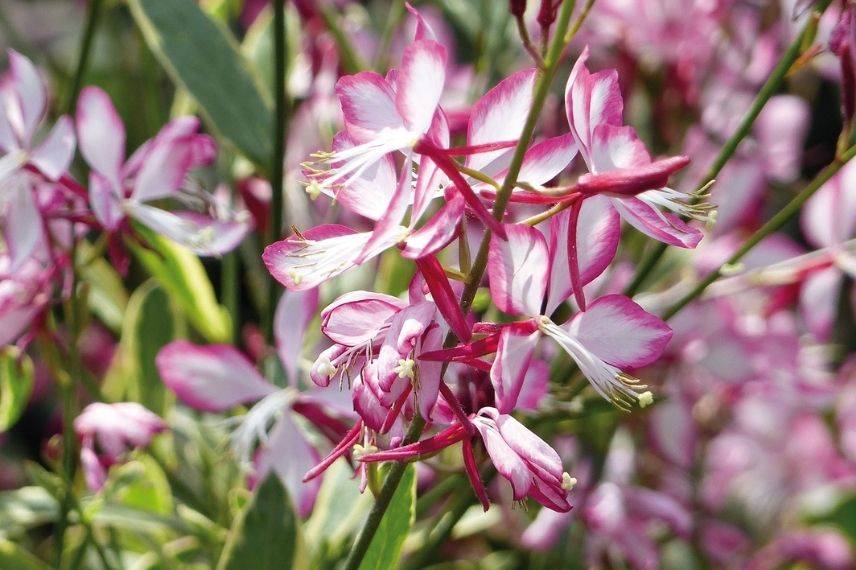
The variegated-leaved Lindheimer’s Gaura ‘Freefolk Rosy’ (photo Graines Voltz)
Different varieties of Gauras are available online on our site.
Planting, growing, and caring for Gauras: all our tips on our dedicated guide.
Lavandula angustifolia ‘Bleu de Gien’
To give a Mediterranean feel to your west-facing balcony, Lavandula angustifolia ‘Bleu de Gien’ is the perfect plant! This perennial is a cousin of thyme, sage, and rosemary, quintessential southern plants. Lavender ‘Bleu de Gien’ forms a small rounded clump of 40 cm, an ideal size for pot planting. Its grey-green evergreen foliage is very decorative. But the highlight is its highly fragrant flowering from June to August, with spikes of a deep violet-blue! Also known as true lavender or common lavender, the flowers of this very melliferous and water-efficient Mediterranean plant are harvested for numerous uses. Place it in full sun in a mix of garden soil, gravel, pebbles, and coarse sand to ensure perfect drainage. Poor soil is ideal for this undemanding perennial. Be careful not to overwater, as it is susceptible to fungal diseases that can develop quickly with heat and humidity. Pruning after flowering is necessary to maintain a nice rounded shape, as lavenders do not regrow on old wood. Despite its excellent hardiness, bring its pot indoors during winter in colder regions.
Plant lavender alongside other pots: Stipa capillata, Rose ‘The Fairy’, Helichrysum italicum, and Dianthus plumarius ‘Mrs Sinkins’.
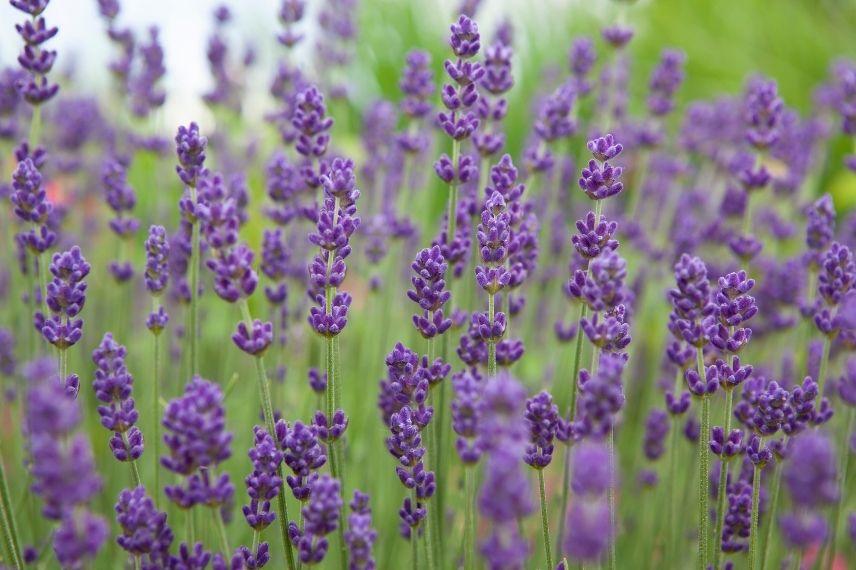
Lavandula angustifolia ‘Bleu de Gien’
A wide selection of Lavenders awaits you on our site.
Discover how to plant, prune, and care for Lavenders.
Helianthemum 'Elfenbeinglanz'
The main interest of this small spreading perennial is its ability to thrive in dry soil. Helianthemum ‘Elfenbeinglanz’ is very water-efficient and withstands drought very well. From May to August, this ground cover also delights us with its small, single ivory flowers with yellow centres from which long stamens emerge, giving it all its charm. Not to mention that its evergreen foliage provides a touch of greenery all year round on the balcony. Hardy to temperatures below -15°C, this rock rose enjoys sunny locations, dry, stony, and well-drained soils. It is incredibly robust, very easy to grow and maintain. At the end of summer, pinch off the faded flowers and foliage to encourage new flowering and keep a well-furnished clump.
In pots, the spreading habit and vibrant flowering of Helianthemum ‘Elfenbeinglanz’ pairs well with Arabis, Erigeron ‘Strahlenmeer’, and Erysimum linifolium ‘Bowles Mauve’ for a bit of verticality.
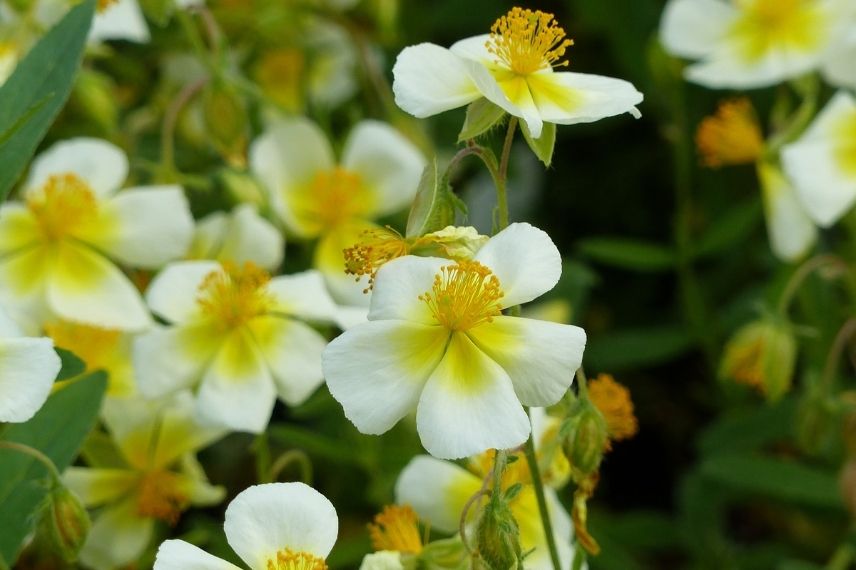
Helianthemum ‘Elfenbeinglanz’
Discover other varieties of Helianthemums in our range.
Everything you need to know about planting, growing, and maintaining Helianthemums!
Salvia macrophylla ‘Cerro Potosi’
Salvia macrophylla ‘Cerro Potosi’ is a hardy perennial that thrives in all soils, even poor ones, as long as they are well-drained. Its very long flowering period brightens up balconies from spring to autumn with its vibrant fuchsia pink flowers! Additionally, this sage forms a bush of aromatic leaves with a pleasant herbaceous and menthol scent. Hardy down to -15°C, place the Shrubby Sage ‘Cerro Potosi’ in full sun or partial shade. It is also water-wise and requires little maintenance! A simple pruning at the end of winter is sufficient.
In a large pot, the bushy habit and bright colour of the Sage ‘Cerro Potosi’ is enhanced alongside Ceratostigma willmottianum ‘Forest Blue’, Sedum ‘Matrona’, and Artemisia stelleriana ‘Boughton Silver’.
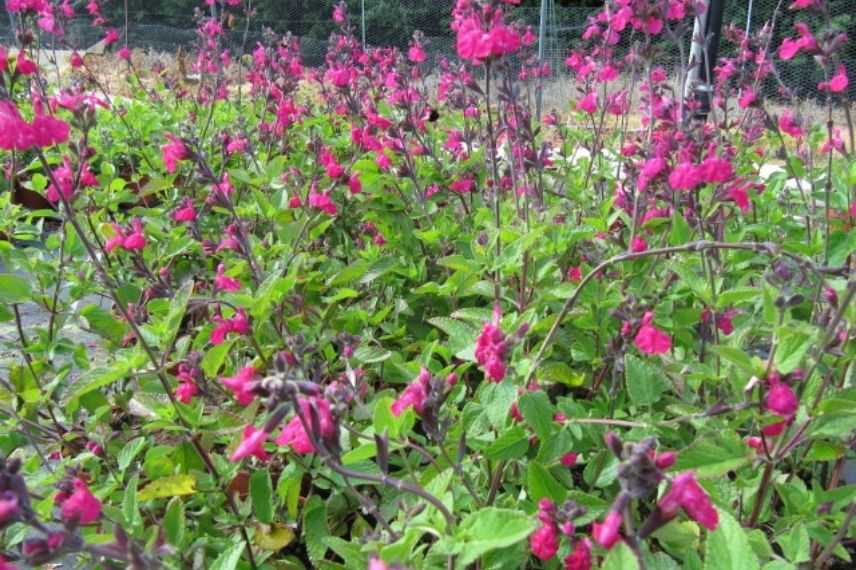
Salvia macrophylla ‘Cerro Potosi’ (photo L. Enking)
We offer many other varieties of Sages in our nursery.
The best practices for planting, growing, and maintaining Sages can be found in our guide.
- Subscribe!
- Contents
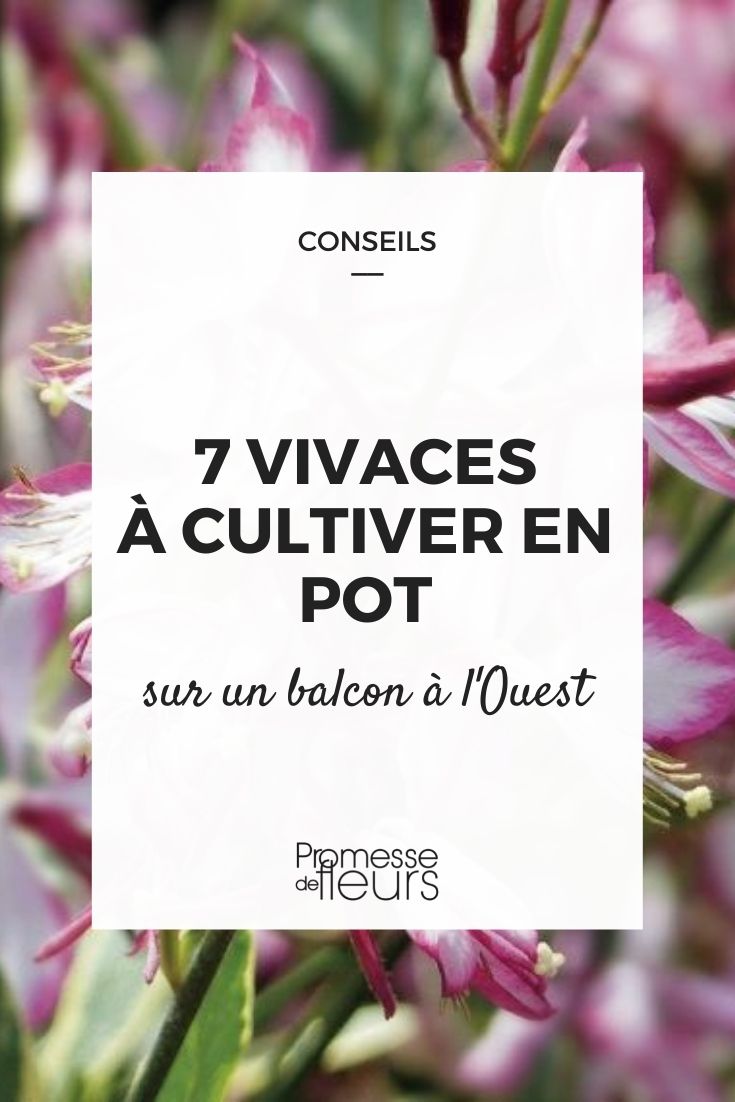































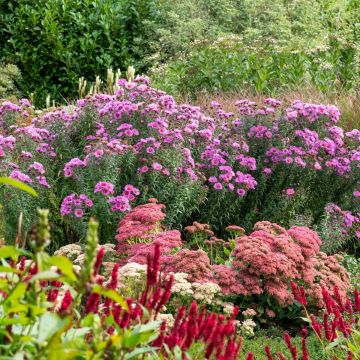
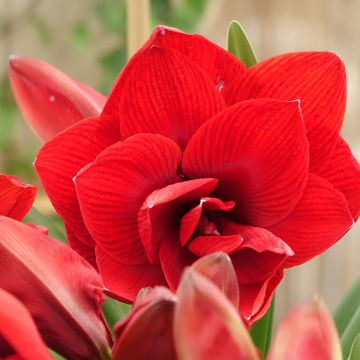


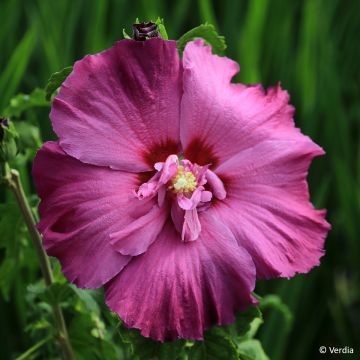
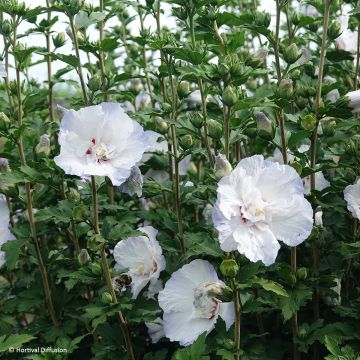
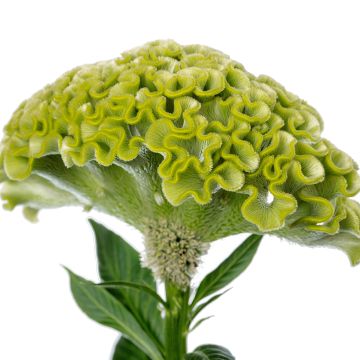
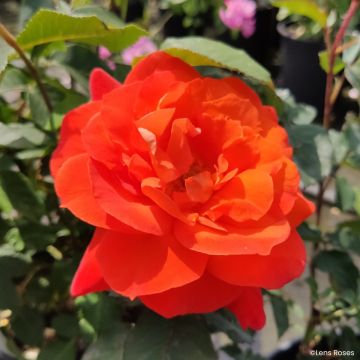
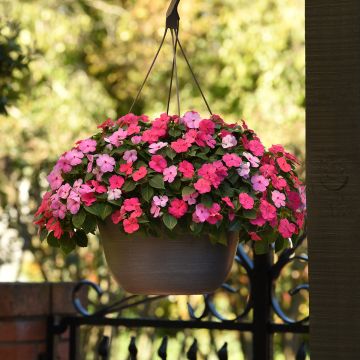
Comments